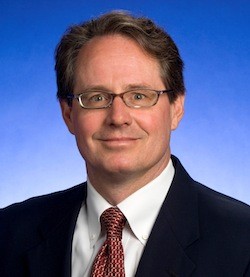As the longest-term investors in the institutional space, public pension plans must strike the right balance between generating strong near-term investment returns and planning for the long haul.
A disproportionate focus on the short term may put a pension entity in the position of having to play catch-up amid bigger-picture trends evolving in the space; with too much long-term focus, the eye can be taken off the ball of delivering current investment returns, which in itself would complicate the longer term.
Tennessee Consolidated Retirement System is striking the right balance. The $43 billion pension plan posted a total return of 16.7% for the fiscal year ended June 30, 2014, and its three-year annualized return of 10.6% beat almost four-fifths of comparable institutional portfolios. For the longer term, TCRS created a hybrid defined benefit / defined contribution plan, with the aim of providing a sufficient retirement benefit to members, a long-term sustainable pension plan, and an affordable plan to employers.
“To get synergies from both the DB and DC plans, we’re underway with an effort to unitize the pension plan,” TCRS Chief Investment Officer Michael Brakebill told Markets Media. The pension plan invests on behalf of about 214,000 active members and more than 130,000 retirees.
Participants in the new defined contribution plan will be able to select the same investments and investment managers that are in the defined benefit plan. “My group is more active in working with our defined contribution group, to monitor and evaluate our fund lineup,” Brakebill said.
“On the asset-management side, we’ve done a lot over the past several years in terms of passing investment policy and moving forward on strategic initiatives,” Brakebill said. “We have a non-investment-grade fixed-income portfolio that we call Strategic Lending, which basically consists of bank loans, high yield bonds and other credit investments. That implementation has been a major effort.”
“We have continued our move into private equity, which is a long-term effort,” Brakebill added. “In real estate, we have continued growing our program in terms of assets overall, and we’ve also broadened the program to include a broader range of real estate than what we traditionally have invested in. This includes non-investment grade real estate investments, which are made in either opportunity funds or by purchasing a little riskier real estate on our separate account side.”
Brakebill also highlighted Tennessee Promise, a program that funds community college education in the Volunteer State. “My group manages the investments that generate the income to pay for that program,” he said. “President Obama came to eastern Tennessee to talk about it, and he also mentioned it in his State of the Union address as one of his specific initiatives.”
TCRS’s 2014 investment performance was led by a 27.1% return for the Canadian Equity portfolio, a 25.2% return for U.S. Equity, and a 20.5% return for International Equity. The Domestic Fixed Income portfolio returned 7.7%, which was a good result given the low level of interest rates.
Brakebill joined TCRS in 2008 after almost 14 years at the Teacher Retirement System of Texas, where he last served as director of domestic equities.


